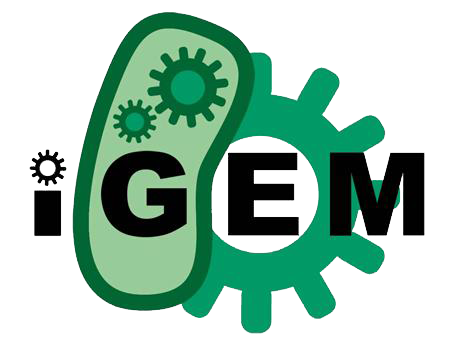

To construct this system and verify the feasibility of this system, we divide the whole structure of ABCD system to four parts by flexibly utilizing the modular features of Synthetic Biology.
First of all, the aptamer SYL3C [1] and its “complementary strand” must form a structure of double-strand, which is the basis of competition (see more details in our Design: https://2018.igem.org/Team:XMU-China/Design). The electrophoretic behavior of ssDNA is evidently different from that of dsDNA due to their different conformations. [2] On this basis , we use electrophoresis to prove that the SYL3C-C3-FITC complex indeed forms (Figure 1, see more details in our Results: https://2018.igem.org/Team:XMU-China/Results).

Figure 1. The results of electrophoresis.
II.Particle Standard Curve
Aptamer binding its target is also significant because this is the propulsion of competition. It is worth mentioning that there are many ways to show these two molecules’ binding and their affinity [3]. This time we use an approach of ultrafiltration (Figure 2) to prove the binding of SYL3C and EpCAM. Those EpCAM which bind the SYL3C-FAM will be intercepted by the special filter, which will cause the decrease in fluorescence intensity of the filtrate after centrifugation (Figure 3, see more details in our Results: https://2018.igem.org/Team:XMU-China/Results). The measurement of fluorescence intensity is completed by using a microplate reader (Figure 4).

Figure 2. The ultrafiltration tube produced by Amicon.

Figure 3. The results of ultrafiltration.
III. Fluorescence standard curve

Figure 4. Microplate reader (Tecan Infinite M200 Pro).
Then to prove whether competition is feasible or not, the traditional fluorescence approach is used properly, which is also applied in characterization of LbCpf1 to visualize its trans-cleavage property. The C3 strand is modified by linking a FITC label. If competition succeeds, it can verify that EpCAM squeeze out the C3 from SYL3C-C3-FITC complex, and the fluorescence intensity of supernatant of “adding EpCAM” will show significant difference to that of “without EpCAM” (Figure 5, see more details in our Results: https://2018.igem.org/Team:XMU-China/Results). In addition, we use a fluorescence spectrometer (Figure 6) to carry out the measuring task rather than a microplate reader used before, which means that diverse measurement methods are involved appropriately and reliably in our experiments.

Figure 5. The results of competition (4-“adding EpCAM”, 3-“without EpCAM”).

Figure 6. Fluorescence spectrometer (Shimadzu RF-6000).
[1] Yanling Song, Zhi Zhu, Yuan An, Weiting Zhang, Huimin Zhang, Dan Liu, Chundong Yu, Wei Duan, Chaoyong James Yang, Selection of DNA Aptamers against Epithelial Cell Adhesion Molecule for Cancer Cell Imaging and Circulating Tumor Cell Capture, Anal Chem, 2013, 85, 4141-4149.
[2] Janet Iwasa, Wallace Marshall, Karp’s Cell and Molecular Biology: Concepts and Experiments (8th ed.), Wiley: Hoboken, NJ, 2016, 719.
[3] Ge Yang, Qiang Wei, Xinying Zhao, Feng Qu, Research advances of aptamers selection for protein targets, Chinese Journal of Chromatography, 2016, 34, 370-381.


